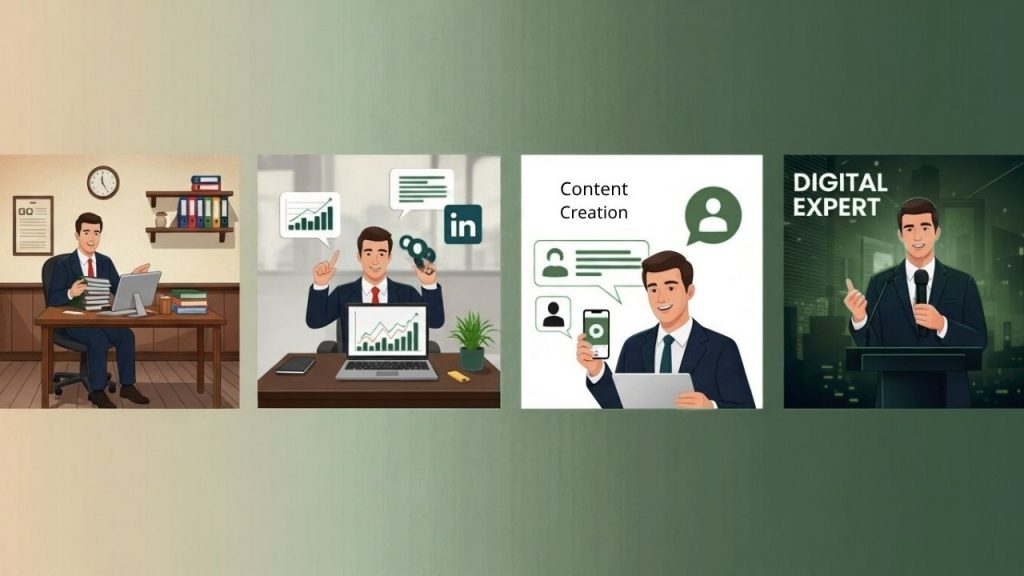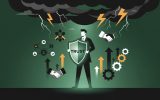Introduction: The Era of Reinvention
Not long ago, being a successful business owner meant having a physical store, a loyal customer base, and strong word-of-mouth. But today, that’s no longer enough. The digital world has changed everything. From customer behavior to marketing strategies, every aspect of business now revolves around online authority.
This blog explores how traditional business owners are reinventing themselves into digital authorities—not by abandoning their roots, but by amplifying them through personal branding, storytelling, and thought leadership.
If you’ve ever wondered how to take your traditional business into the digital spotlight, this is your blueprint.
1. The Shift from Brick-and-Mortar to Click-and-Influence
Transitioning from a traditional business owner to a digital authority isn’t just about creating a website or posting on social media. It’s about changing the entire mindset—from local visibility to global credibility.
A 2024 HubSpot study revealed that 82% of consumers research a brand online before making a purchase decision. This means your online presence is no longer optional—it’s the foundation of trust.
Take the example of Ali Rahman, a Pakistani textile manufacturer. Once known only within his city, he started sharing behind-the-scenes videos on LinkedIn and Instagram about craftsmanship and ethical production. Within a year, he became a recognized voice in sustainable fashion, attracting global B2B clients—all through personal branding.
2. Building a Personal Brand That Mirrors Your Values
To become a digital authority, business owners must start by defining what they stand for.
Ask yourself:
- What values built your business?
- What change do you want to bring in your industry?
- What problems do your products or services truly solve?
When you communicate these authentically, your brand becomes more than a logo—it becomes a movement.
For instance, Howard Schultz, the visionary behind Starbucks, didn’t sell coffee; he sold connection. His brand message revolved around community and experience. That same principle applies online—your audience connects with your story, not your storefront.

3. Crafting a Digital Identity That Reflects Credibility
Your digital identity is how the world perceives you online. Every LinkedIn post, blog article, podcast appearance, or YouTube video contributes to it.
Here’s a proven step-by-step transformation plan:
- Audit Your Online Presence: Google yourself. What do people see? Does it represent your expertise?
- Optimize Your Profiles: Use professional photos, clear bios, and consistent brand messaging.
- Share Value-Driven Content: Teach what you know. Create content that helps your audience solve real problems.
- Engage Authentically: Respond to comments, collaborate with peers, and show genuine interest in others.
- Leverage Media & Podcasts: Appear on industry-related shows to expand your digital footprint.
Remember: authority isn’t built overnight—it’s earned through consistency.
4. Storytelling: The Bridge Between Past and Future
Traditional business owners have one powerful advantage—stories. Years of experience, customer interactions, and lessons learned are gold mines for online engagement.
Use storytelling to make your audience feel part of your journey. For example:
- Share how your father started the business with limited resources.
- Talk about challenges you faced during economic shifts.
- Show transformation: how you adapted from physical trade shows to digital marketing.
According to Content Marketing Institute, story-driven posts receive 300% more engagement than direct promotions. Why? Because stories make brands human.
5. Common Mistakes When Transitioning to Digital Authority
Even experienced business owners stumble during their digital transformation. Avoid these pitfalls:
- Copying competitors: Authenticity beats imitation every time.
- Ignoring consistency: Posting once a month doesn’t build authority.
- Neglecting storytelling: Facts inform, but stories inspire.
- Focusing only on sales: Educate and empower before you sell.
- Avoiding new platforms: Embrace change—TikTok, LinkedIn, and YouTube Shorts can open new audiences.
Remember, personal branding isn’t about perfection—it’s about progress with purpose.
6. Actionable Strategies to Become a Digital Authority
Here’s how you can practically evolve from a traditional business owner to a digital authority:
a. Create Signature Content
Develop one signature format—like weekly LinkedIn insights, YouTube mini-lessons, or podcast interviews. This builds routine recognition.
b. Leverage Educational Marketing
Teach what you know. Hosting webinars or sharing tutorials establishes you as an expert rather than just a business owner.
c. Show the Human Side
People buy from people. Share behind-the-scenes moments, team celebrations, or customer success stories.
d. Build a Personal Website
Your digital home should showcase your story, achievements, blogs, and contact info. It’s your authority hub.
e. Network with Purpose
Collaborate with influencers, join panels, or write guest blogs. Visibility fuels credibility.
7. Real-World Case Study: The Reinvention of Ahmed Khan
Ahmed Khan ran a small auto parts business in Lahore for 20 years. Sales were steady but limited. In 2021, he realized he needed to go digital. Instead of hiring an agency, he began learning about branding and social media himself.
He started a YouTube channel called “Mechanic Mindset,” where he shared car maintenance tips and behind-the-scenes insights about quality parts. Within months, his videos started trending among auto enthusiasts.
Today, Ahmed receives international orders, has 50K+ followers, and is recognized as a thought leader in the automobile sector.
His success came from a simple principle: “Educate first, sell later.”
8. The Future of Business Authority: Human + AI Collaboration
The next decade belongs to digitally intelligent business leaders. AI tools can help amplify your voice—but only if your brand has a strong human foundation.
Future trends include:
- AI-assisted content creation for efficiency
- Data-driven personal branding strategies
- Integration of AR/VR for immersive customer experiences
- Rise of micro-authorities—niche experts who dominate small but loyal audiences
Business owners who combine authentic storytelling with smart digital tools will lead the future.
9. FAQs: From Traditional Business Owner to Digital Authority
Q1: How can I start building a personal brand if I have zero online presence?
Begin with LinkedIn. Optimize your profile, share short insights weekly, and engage with your industry community.
Q2: Do I need to hire a branding agency?
Not necessarily. Start by being consistent online. Once you gain clarity and traction, you can consult experts for optimization.
Q3: How long does it take to build digital authority?
It typically takes 6–12 months of consistent, authentic content before people recognize you as an authority.
Q4: What type of content works best for personal branding?
Educational, storytelling, and behind-the-scenes content outperform pure promotional posts.
Q5: Can small business owners really compete with big brands online?
Absolutely. Authenticity and expertise can outperform expensive advertising when your message resonates deeply.
Q6: How can I maintain credibility online?
Be transparent, cite real results, respond respectfully to feedback, and continuously deliver value.
10. Conclusion: Authority Is the New Currency
The journey from traditional business owner to digital authority is no longer optional—it’s essential. In a world where customers Google before they buy, your online presence is your new reputation.
You don’t need fancy ads or viral videos—just a consistent story, valuable content, and genuine human connection.
Remember: authority isn’t about followers; it’s about influence, trust, and purpose.
Start today—because the future of your business is already online, waiting for your voice.




